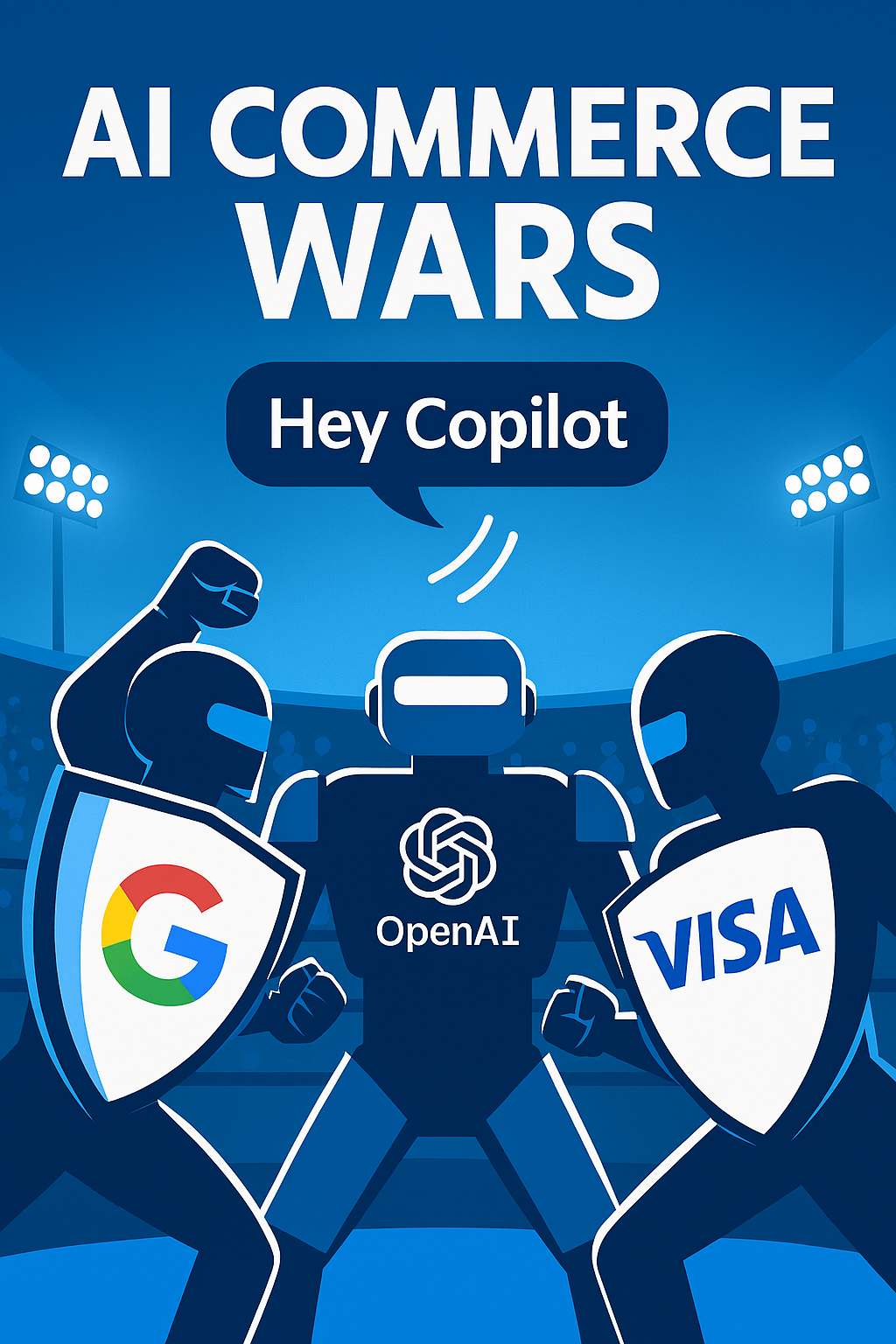Physical Address
304 North Cardinal St.
Dorchester Center, MA 02124
Physical Address
304 North Cardinal St.
Dorchester Center, MA 02124

In the rapidly evolving world of artificial intelligence, a new battleground has emerged—agent protocols. These frameworks govern how autonomous AI agents interact with users, systems, and each other. And now, three titans—Google, OpenAI, and Visa—are locked in a high-stakes race to define the future of AI-driven commerce.
This isn’t just a technical rivalry. It’s a struggle over who will control the standards that shape how we shop, pay, and interact with digital agents. The implications are massive: from how your AI assistant buys groceries to how businesses automate transactions across platforms.
Agent protocols are the rules and systems that allow AI agents to:
Think of them as the “TCP/IP” of AI commerce—foundational standards that determine interoperability, security, and user experience.
Google’s A2A protocol is designed to enable seamless communication between AI agents across platforms. It’s part of their broader push to create an interoperable agent ecosystem that spans search, shopping, payments, and productivity.
Google’s vision is a world where your AI agent can talk to other agents—whether they’re on Amazon, Shopify, or your bank—and complete tasks without human intervention.
OpenAI has taken a different approach. Their agent system is tightly integrated with their models and tools, focusing on deep personalization and contextual reasoning.
OpenAI’s agents are designed to act like digital employees—handling everything from scheduling to purchasing, but within a controlled ecosystem.
Visa’s AP2 protocol is built for secure, scalable financial transactions. It’s less about general AI and more about enabling agents to make payments safely and compliantly.
Visa’s goal is to become the backbone of AI-driven commerce, ensuring that when your agent makes a purchase, it’s fast, secure, and universally accepted.
As these giants push their protocols, the industry faces a critical challenge: fragmentation. Without a unified standard, AI agents may struggle to communicate across platforms, leading to:
This echoes past tech battles—like VHS vs. Betamax or iOS vs. Android—but with far broader implications. AI agents aren’t just apps; they’re autonomous actors that make decisions, spend money, and interact with sensitive data.
AI-driven commerce is projected to reach $2.3 trillion by 2030, according to industry analysts. That includes:
Whoever controls the agent protocols will shape how this money flows. Will your AI assistant use Google’s A2A to find the best deal? Or OpenAI’s system to negotiate a subscription? Or Visa’s AP2 to make the payment?
The tension boils down to two competing philosophies:
Both companies are pushing for protocols that work across platforms. Google wants agents to collaborate, while Visa wants payments to be universally accepted.
OpenAI favors a more curated experience, where agents operate within a trusted environment. This allows for deeper personalization but limits cross-platform functionality.
This mirrors the Apple vs. Android debate—control vs. openness. And just like in mobile, the outcome will shape the future of AI.
With agents making decisions and spending money, security is paramount. Visa’s AP2 protocol includes:
OpenAI and Google are also investing in ethical guardrails, but the lack of unified standards makes enforcement difficult. What happens when a rogue agent exploits a protocol gap? Or when agents from different ecosystems misinterpret each other?
Industry insiders predict three possible outcomes:
A consortium could emerge to unify protocols—similar to W3C for the web. This would require cooperation between rivals, which is unlikely but not impossible.
Users may be forced to choose an ecosystem—Google, OpenAI, or Visa—and stick with it. This could stifle innovation and limit user freedom.
Startups may build bridges between protocols, allowing agents to translate and collaborate. This could delay fragmentation but won’t solve the root issue.
The battle between Google, OpenAI, and Visa isn’t just about technology—it’s about who controls the future of AI commerce. As agents become more autonomous, the protocols they follow will determine how we shop, pay, and interact with the digital world.
For consumers, this means more convenience—but also more complexity. For developers, it’s a call to action: build with interoperability in mind. And for regulators, it’s a wake-up call: the age of autonomous commerce is here, and it needs guardrails.
The protocol wars have begun. Let’s hope they end with collaboration, not fragmentation.